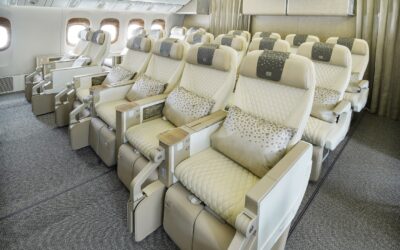
Second-quarter systemwide business transient revenue per available room at Marriott International properties dropped 2 percent year over year, executives said during a Tuesday earnings call, adding they expect steady performance in the segment for the balance of the year.
The company now projects full-year systemwide business transient RevPAR to be “around flat year over year,” Marriott CFO Leeny Oberg said on the call.
Oberg noted that Q2 business transient RevPAR would have dropped about 1 percent year over year without the effect of government transient travel, RevPAR for which declined 17 percent.
Oberg, who last month announced she would retire in 2026, and Marriott CEO Anthony Capuano each attributed the business travel slowdown to macroeconomic uncertainty.
“If you kind of unpack that a bit, you continue to see that BT apart from government is experiencing this kind of lower growth that fits what’s going on with global economic activity,” Oberg said.
She later added that though last month’s passage of the Trump administration’s spending bill along with continued negotiations on tariffs offers “a bit more of an open view about where the economy is going,” she suggested that “we are not assuming a fundamental shift in business transient,” and “from a general level of economic activity, we are assuming pretty much steady as she goes and not some sort of big pickup.”
Oberg said the company projects overall fourth-quarter RevPAR to accelerate from third-quarter levels, due in part to the timing of large events, but Capuano noted the average second-quarter business transient booking window was only 16 days, offering executives a limited view into the sector’s future.
“Most of the corporates that we work with … I would characterize them as back to normal,” Capuano said. “A lot of the travel restrictions they had coming out of the pandemic are largely gone. You’re seeing more and more return to the office, either voluntary or mandated. And I think that’s having some impact on business transient volume as well. But the volatility and the uncertainty … appears to be the biggest contributor to the bit of softness we saw in the quarter.”
Marriott Q2 Metrics
Marriott’s systemwide second-quarter RevPAR increased 1.5 percent year over year to $136.00, while average daily rate increased 1.9 percent to $188.25 and occupancy decreased 0.3 percentage points to 72.2 percent. The RevPAR increase matched the low end of Marriott’s projection of one quarter prior.
In the United States and Canada, first-quarter RevPAR held steady year over year at $142.78, while ADR increased 1.2 percent to $193.29, and occupancy declined 0.9 percentage points to 73.9 percent.
Marriott projected systemwide third-quarter RevPAR in a range from steady year over year to a 1 percent increase, and full-year RevPAR to increase 1.5 percent to 2.5 percent year over year.
Total second-quarter revenue increased nearly 5 percent year over year to more than $6.7 billion. Net income was $763 million, compared with $772 million one year prior.
At the end of the second quarter, Marriott had about 9,600 properties in its system globally. It added 17,300 net rooms during the quarter. Marriott’s pipeline at the end of Q2 totaled nearly 3,900 properties with more than 590,000 rooms.
RELATED: Marriott Q1 performance



Recent Comments